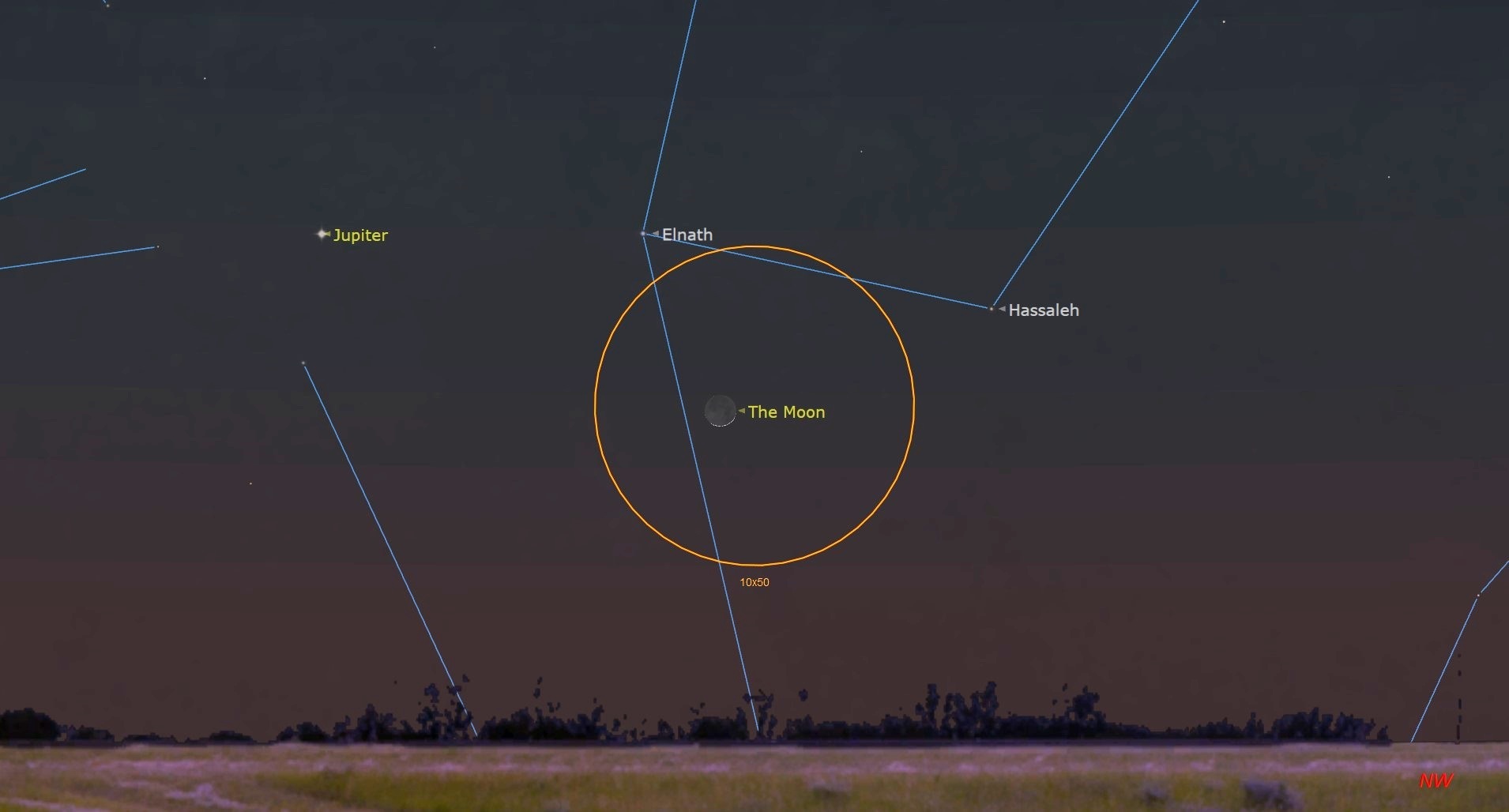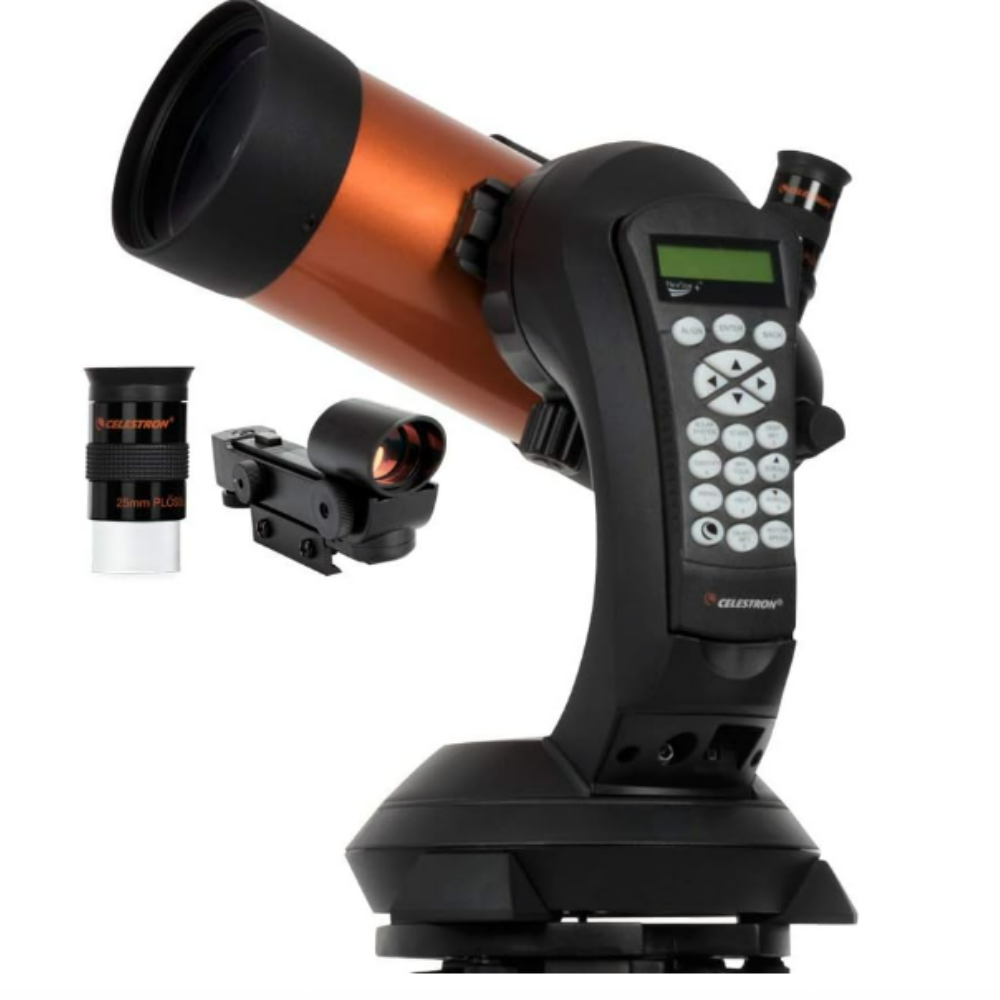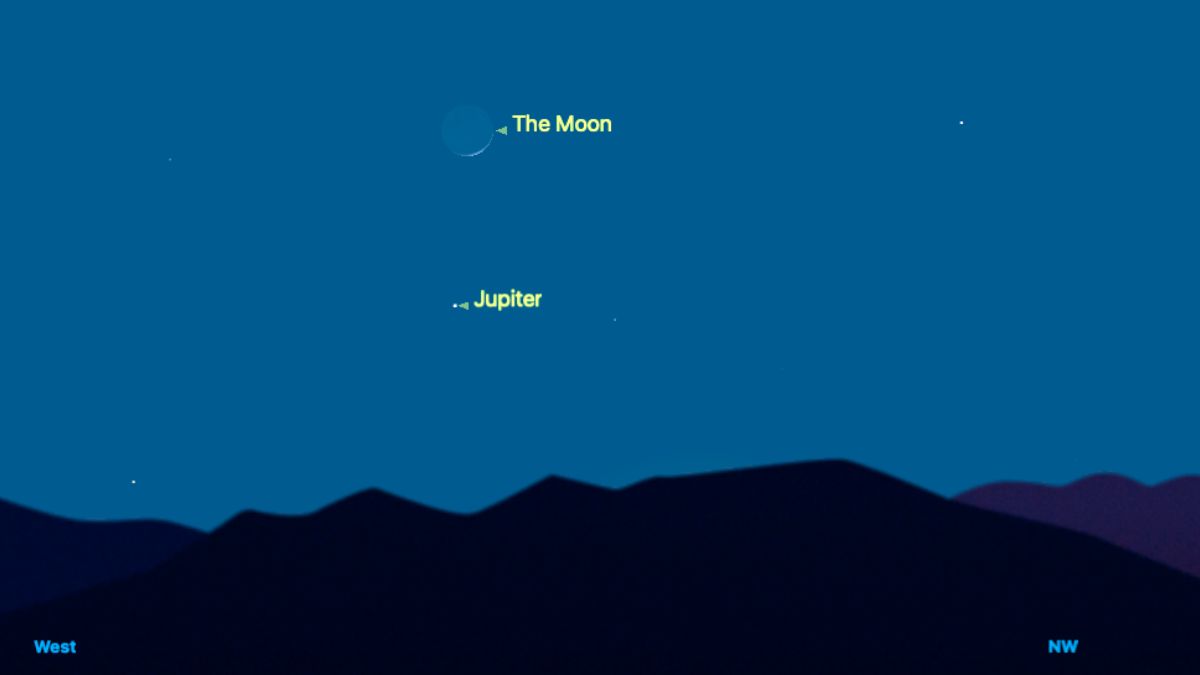
Jupiter will soon end its brilliant year-long showing on consecutive evenings with a rendezvous with an exceedingly thin and very young crescent moon.
Indeed, for the first opportunity on Tuesday, May 27, the moon itself will appear so thin and low that it may be rather hard to detect in the sun's afterglow; and seeing Jupiter itself will not be an easy task either, appearing to sit about 10 degrees to the upper left of the slender lunar sliver.
The moon will be only about 1% illuminated and will be about 24 hours or fewer past the new moon phase. The pair will be setting less than one and a half hours after local sunset, but the following evening will offer a somewhat better chance of making a sighting.

Want to see Jupiter up close? The Celestron NexStar 4SE is ideal for beginners wanting quality, reliable and quick views of celestial objects. For a more in-depth look at our Celestron NexStar 4SE review.
Do you have a favorite phase of the moon? Romantics will almost certainly be drawn to a full moon, but during its 29.5-day cycle, going from one new moon to the next, our satellite offers up plenty of other choices. Have you ever been drawn to the precise semicircle of a first or last quarter moon? Maybe you've been surprised upon heading out to work or school in the morning, and seeing the moon, about two-thirds illuminated and still clearly visible against the blue daytime sky?
But no matter what your favorite phase is, surely, we can all agree that for sheer beauty, nothing can beat a razor-thin crescent moon hanging over the western horizon in the fading evening twilight. Often, people are surprised and delighted when they see the moon in this fashion.
Age before beauty
To obtain an approximate age for a young crescent moon, simply add the number of hours or days that have elapsed from the time of new moon through the date and time of sunset at your location on a particular evening. Most folks — just casual observers — are unlikely to notice a young crescent moon until three or four days after it is new, when the fattening crescent has moved out of the evening twilight and into the dark night sky. A two-day old moon is not difficult to see if you know where to look. But to see a moon one day old — or less — requires planning and patience.
The new moon occurs at 11:02 p.m. EDT on Monday night. So, on Tuesday evening, in order to enhance your chances for getting a view of both the hairline-thin crescent moon and Jupiter, make sure that your prospective viewing site has a very clear and unobstructed view toward the west-northwest part of the sky. Carefully note exactly where on the horizon the sun sets (but don't look at the sun directly without a safe filter).
Get the Space.com Newsletter
Breaking space news, the latest updates on rocket launches, skywatching events and more!
A half hour after sunset, check the area of the sky almost directly above where the sun set. The moon will be no higher than 6.5 degrees above the horizon. As we have pointed out on many other occasions, 10 degrees is roughly equivalent to the apparent width of your clenched fist held at arm's length. So, about half an hour after sunset the moon will appear just over a "half fist" above the horizon. And Jupiter, which will be nothing more than a bright, white dot against the bright twilight background, will appear only 5 degrees higher.
At that moment from the East Coast, the moon will be only 21.8 hours old and 1.2 percent illuminated. By the time it's half-past sunset on the West Coast, the moon's age will be three hours older, the illuminated crescent will be 0.4 percent wider and will appear about one-degree higher in the sky. You can accentuate your chances of picking up both moon and planet by scanning around that part of the sky with binoculars; once you see them, getting a glimpse of the wire-like crescent and Jupiter with your unaided eyes should be a bit easier.
An easier sighting on Wednesday
On the following evening (Wednesday, May 28), the still delicately thin crescent is noticeably wider (5 percent illuminated) and considerably higher (17 degrees) above the west-northwest horizon a half hour after sunset.
On this date, even people who aren't looking for the crescent moon should see it readily. Thanks to the steep angle that the ecliptic — the line in the sky along which the sun, moon, and planets appear to travel — makes with the horizon, the crescent looks like a thin "smile" in the sky. As for Jupiter, it will be sitting about 8 degrees directly below the moon.

Farewell Jupiter
After Wednesday, you can pretty much say goodbye to Jupiter as an evening object, as it will be rapidly swallowed up by the sunset glow within the following week. It will be in conjunction with the sun on June 24 and will not reappear again until sometime in mid-July when it will transition to the early morning sky. However, it is destined to put on a nice showing in the predawn sky during midsummer, being positioned among the stars of Gemini, the Twins.
And in early August it will team up with brilliant Venus making for an attractive celestial scene; the two planets will appear side-by-side on the morning of August 11 and will be closest to each other the following morning, separated by just 0.87 of a degree, an eye-catching sight to be sure!
So, for Jupiter this is not "good-bye," but rather, "till we meet again this summer ..."
If you're looking for a telescope or binoculars to observe the night sky, our guides for the best binoculars deals and the best telescope deals now can help. Our guides on the best cameras for astrophotography and best lenses for astrophotography can also help you prepare to capture the next skywatching sight.
Joe Rao serves as an instructor and guest lecturer at New York's Hayden Planetarium. He writes about astronomy for Natural History magazine, Sky and Telescope and other publications.
Join our Space Forums to keep talking space on the latest missions, night sky and more! And if you have a news tip, correction or comment, let us know at: community@space.com.

Joe Rao is Space.com's skywatching columnist, as well as a veteran meteorologist and eclipse chaser who also serves as an instructor and guest lecturer at New York's Hayden Planetarium. He writes about astronomy for Natural History magazine, Sky & Telescope and other publications. Joe is an 8-time Emmy-nominated meteorologist who served the Putnam Valley region of New York for over 21 years. You can find him on Twitter and YouTube tracking lunar and solar eclipses, meteor showers and more. To find out Joe's latest project, visit him on Twitter.
You must confirm your public display name before commenting
Please logout and then login again, you will then be prompted to enter your display name.
